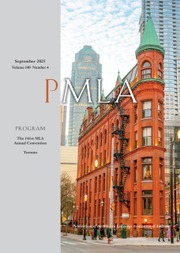Article contents
The Carnivalization of Eighteenth-Century English Narrative
Published online by Cambridge University Press: 26 February 2021
Abstract
Following the institutionalization of the public masquerade in England in the first decades of the eighteenth century, the masquerade set piece becomes a standard, though problematic, topos in English fiction, figuring prominently in novels by Defoe, Richardson, Fielding, Burney, Inchbald, and others. Though characteristically considered an allegory for the corrupt “Town,” the masquerade “diversion” also serves crucial narrative and thematic functions. As a place of unexpected meetings and surprising assignations, it precipitates imbroglio and intrigue, the elaboration of plot itself; and its transgressive social and sexual reversals and exchanges intimate the collapse of ideological and didactic lucidity. Leaving in its wake a world upside down, it coincides with an incursion of mutability and ambiguity into the static world of eighteenth-century representation. Just as the real masquerade represented a carnivalesque disruption of the eighteenth-century symbolic order, the masquerade episode disturbs the prevailing decorum of eighteenthcentury English fiction.
- Type
- Research Article
- Information
- Copyright
- Copyright © 1984 by The Modern Language Association of America
References
Works Cited
- 2
- Cited by


